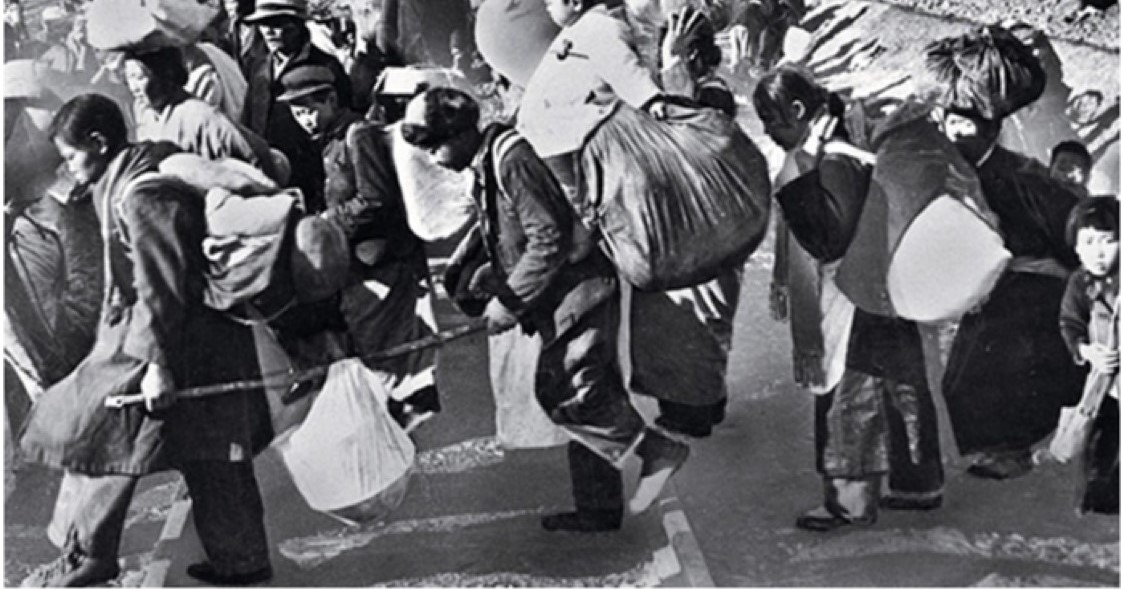
Music

History Through…
…Music
In the Spring of 1954, when the nation’s top record was Perry Como’s “Wanted” and the top album was the soundtrack from the movie The Glenn Miller Story, a new musical style was germinating. Bill Haley and the Comets cut “Rock Around the Clock”; Elvis Presley held his first recording session at Sun Records; and Alan Freed became a disc jockey at WINS in New York. Chuck Berry, Bo Diddley, Little Richard, and The Platters were beginning to break the radio color barrier.
Rock ‘n’ roll provided a vehicle through which urban, rural, and suburban youths declared their independence from parental standards and expressed their desire for pleasure. When the first rock ‘n’ roll concert took place at Cleveland Arena on March 21, 1952, some 30,000 teens packed a building that could seat only 10,000, while 15,000 others waited outside. Rock ‘n’ roll spoke to the alienation and boredom of teenagers in newly built suburbs. The new music exuded sexuality; indeed, the phrase rock ‘n’ roll was a slang term in certain black communities referring to sexual intercourse.
Musically, rock ‘n’ roll was a style of popular music marked by guitar-based instrumentation, blues-based composition, electronic amplification, high volume, and dance-ability. In contrast to jazz, which depended upon brass instruments and the piano, rock ‘n’ roll emphasized the electric guitar and drums. During the 1950s, it became the soundtrack of the lives of those between twelve and twenty-one. Much of the new youth music of the 1950s self-consciously celebrated the teenage years. Groups like Frankie Lymon and the Teenagers embraced the word “Teenagers,” and many songs, like Mark Dinning’s “Teen Angel” and Dion and the Belmonts’ “Teenager in Love,” had the word teen in their title.
What made this new music possible was the movement of Southerners, black and white, to the cities of the upper South and North during and after the war. This movement brought diverse musical traditions together and forged a new sound out of the propulsive beat of rhythm and blues and the twang of country and western.
“Hound Dog” and the Hidden History of Rock ‘n’ Roll
Rock ‘n’ roll, it is said, is the “bastard child” of American music, blending musical genres from rhythm and blues and country and western to gospel, bluegrass, swing, boogie woogie, and jazz. A “musical mutt” and a “sonic quilt,” rock ‘n’ roll was also the product of extraordinary ethnic and cultural crossovers.
Few songs better illustrate the sonic mixture than “Hound Dog,” one of the classic songs that gave birth to rock ‘n’ roll.
Start with the opening: “You ain’t nothin’ but a hound dog.”
The phraseology sounds as if it came from the rural South, with the words “ain’t,” “nothin’,” and “hound dog.” But the composers were two Jewish teenagers from Los Angeles, who would later wrote many of the most important early rock ‘n’ roll hits for such black performers as the Drifters, the Coasters, Ben E. King, the Dixie Cups, and the Shangri-Las.
The song that rocketed Elvis Presley to mega-stardom was originally recorded by Big Mama Thornton, an African American performer who was born in Montgomery, Alabama. The record, first released in 1953, was produced by Johnny Otis, the son of Greek immigrants who grew up in an African-American community and identified himself as black. The composers, Mike Stoller and Jerry Leiber later said that they thought of themselves as black and were surprised whenever they looked into a mirror.
Thornton’s version rose to Number 1 on the Rhythm and Blues charts in 1953. Three years later, Elvis Presley covered the song with slightly altered lyrics (adding the line “You ain’t never caught a rabbit”), to the annoyance of one of the song writers. Leiber said: “The song isn’t about a dog, it’s about a man, a freeloading gigolo.” On television’s Milton Berle Show Presley sang the song to a top-hatted basset hound.
The Presley version was the Number 1 song on the Billboard charts for 11 weeks, a record that was not broken until 1992 by Boyz II Men’s “End of the Road.” “Hound Dog” was just the third record to sell more than 3 million copies, following Bing Crosby’s “White Christmas” and Gene Autry’s “Rudolph The Red-Nosed Reindeer.”
Yet even in its covered version, “Hound Dog” represented a “declaration of independence” by the nation’s teenagers. With his swinging hips and angry scowl, Presley came to personify rock ‘n’ roll’s rebellious attitude.
In recent years, there has been a great deal of controversy involving cultural appropriation: The borrowing (or theft) of the culture of minority groups by members of the dominant group. Obviously, cultural borrowings are widespread (think pizza, bagels, tacos) and cultures are fluid (consider the example of a distinctive form of American dress, blue jeans, which were first created by Levi Strauss, a Bavarian Jewish immigrant).
But it is also the case that many African American musicians, in particular, were exploited economically, and credit for their works appropriated by others.